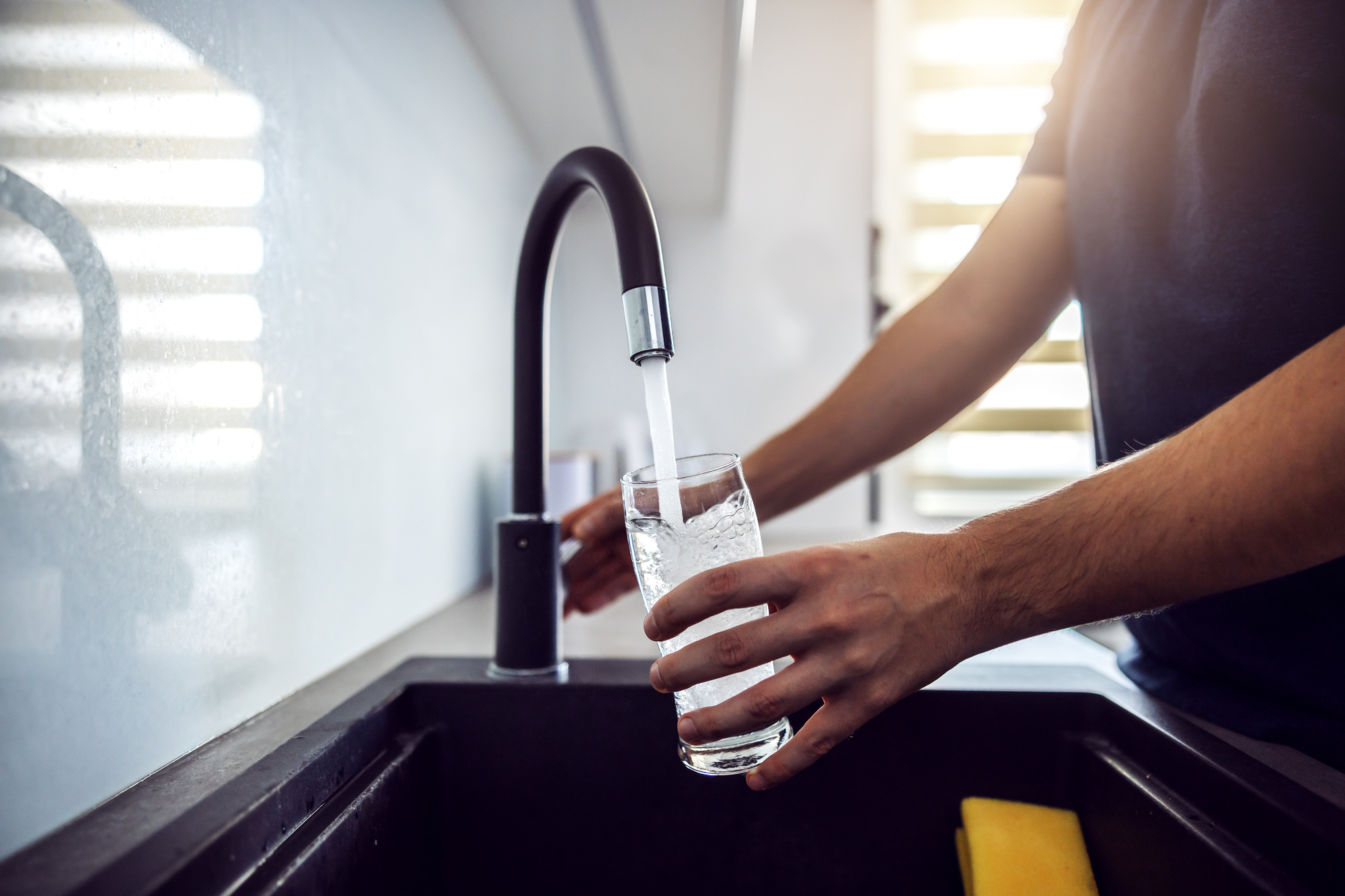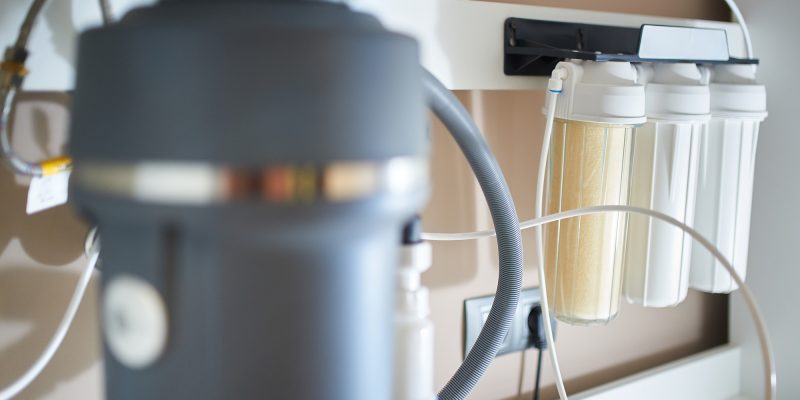Many household chores and daily activities done at home require a supply of fresh, clean water. From food preparation to caring for personal hygiene, childcare, pet care, and other tasks, you’ll always need access to clean water to create a safe and comfortable living environment.
For this reason, among others, homeowners must have water quality awareness. Water quality awareness refers to understanding and recognizing the importance of clean, safe water for consumption and use, highlighting the impact of contaminants on health and the environment. It involves educating individuals and communities about water sources, potential pollutants, and the steps necessary to protect and improve water quality in their surroundings.
As water quality can vary greatly depending on geographic location, infrastructure, and other factors, every homeowner needs to be aware of the quality of water they’re using and how it impacts daily life.
This article discusses the importance of water quality awareness among homeowners and other aspects relevant to the health and safety of your household. Continue reading to learn more.

Close up of young man pouring fresh water from kitchen sink. Home interior.
Understanding water quality
Water quality refers to water’s chemical, physical, and biological characteristics, mainly related to its suitability for a specific purpose, such as drinking or bathing. Factors such as pH levels, hardness, minerals, and contaminants like bacteria and chemicals significantly determine water quality.
One of the most common issues homeowners face is water hardness, which is caused by high levels of calcium and magnesium. Hard water can lead to many problems in the home, including scaling on appliances, reduced soap efficiency, and dry skin and hair. To combat these issues, many homeowners turn to water-softening solutions.
For those interested in exploring water softening options, visiting https://crystalsoftwater.com/softeners can provide valuable information on the latest technologies and products designed to improve home water quality. Water softeners are systems designed to remove calcium and magnesium ions from water, thus reducing hardness and preventing the associated problems.
Why you should be concerned about water quality in your home
Homeowners should be concerned about their water quality for several critical reasons that impact health, home maintenance, and financial well-being. Here are the key reasons why water quality should be a priority for every homeowner:
1. Health and safety
The most immediate concern with water quality is its impact on health. Contaminated water can carry harmful bacteria, viruses, heavy metals (like lead and mercury), and chemicals (pesticides, industrial chemicals) that pose serious health risks.
Drinking or using contaminated water can lead to gastrointestinal illnesses, neurological disorders, reproductive problems, and chronic diseases. Ensuring water quality helps protect you and your family from these health hazards.
2. Appliance lifespan and efficiency
Poor water quality and tough water can significantly reduce the efficiency and lifespan of home appliances that use water, such as washing machines, dishwashers, water heaters, and boilers.
Hard water leads to mineral buildup inside appliances, reducing efficiency, increasing energy consumption, and causing early breakdowns. Addressing water quality can save homeowners money on repairs and replacements over time.
3. Plumbing system longevity
Just as appliances can suffer from hard water, plumbing systems are also at risk. The minerals in hard water can accumulate inside pipes, leading to clogs, corrosion, and leaks. Over time, this can cause severe damage to a home’s plumbing infrastructure, necessitating costly repairs or replacements.
4. Personal comfort and hygiene
Water quality affects personal comfort and hygiene in significant ways. Hard water can make it difficult to form a lather with soap, resulting in less effective cleaning and skin and hair feeling dry and itchy. Additionally, water with unpleasant odors or tastes can make drinking tap water unappealing, leading to increased costs and environmental impact from bottled water.
5. Property value and marketability
The quality of a home’s water supply can influence its value and attractiveness to potential buyers. Homes with known water quality issues, such as contamination or hard water, may be less desirable, affecting the property’s marketability and sale price. Investing in water quality improvements can enhance a home’s appeal and value.
6. Environmental responsibility
Addressing water quality issues benefits homeowners directly while contributing to broader environmental conservation efforts. For example, reducing the demand for bottled water by improving tap water quality can decrease plastic waste and the carbon footprint associated with producing and transporting bottled water.
Given these considerations, it’s clear why water quality should be a top priority for homeowners. Proactively managing water quality through testing, treatment systems (like filters and softeners), and regular maintenance of water-related appliances and plumbing can safeguard health, enhance the quality of life, protect investments in the home, and contribute to environmental sustainability.
Signs of poor water quality at home
Signs of poor water quality in your home can vary widely depending on the specific contaminants or issues affecting the water. However, there are several common indicators that homeowners can look out for. If you notice any of the following signs, it might indicate a problem with your water quality:
1. Unusual taste or smell
A metallic taste can suggest the presence of heavy metals such as lead, iron, or copper. Meanwhile, a chlorine taste or smell is often due to the treatment process but can be unpleasant if it’s too strong.
If you notice earthy or musty odors, they might indicate organic matter or certain bacteria in the water. Then, a rotten egg smell can be a sign of hydrogen sulfide gas, often from decaying underground deposits or certain bacteria.
2. Discoloration
Any form of discoloration should be a cause of concern regarding water quality in your household. Brown, red, or yellow water can indicate rust or sediment, possibly from old pipes or the water source.
Blue or green water suggests corrosion of copper pipes, potentially leading to high levels of copper. Cloudy or milky water could be due to air bubbles or particulates suspended in the water.
3. Stains
Orange or brown stains on fixtures and laundry may indicate high iron levels. On the other hand, blue or green stains are typically caused by copper leaching from pipes. Finally, black stains could reveal the presence of manganese or certain bacteria.
4. Scale buildup
Hard water, characterized by high levels of calcium and magnesium, can lead to scale buildup on appliances and fixtures, reducing their efficiency and lifespan.
5. Skin irritation or hair problems
Water with high chlorine levels or imbalanced pH can cause skin irritation or dryness and affect hair health.
If you observe any of these signs, having your water tested by a certified laboratory is advisable to identify the contaminants and determine the best action to address the issue. Depending on the results, solutions range from installing water filtration systems to repairing or replacing old plumbing.
The impact of poor water quality
Poor water quality at home can lead to various implications, affecting health, daily living, and economic aspects. Here’s a detailed look into the possible repercussions:
Health implications
- Waterborne diseases: Contaminated water can carry pathogens like bacteria, viruses, and parasites, leading to diseases like cholera, dysentery, typhoid, and hepatitis.
- Chemical exposure: Harmful chemicals in water, such as lead, arsenic, and mercury, can cause long-term health issues, including neurological problems, kidney damage, and cancer.
- Skin irritations: Poor water quality can cause skin problems, including dermatitis, rashes, and other irritations, especially for sensitive skin or conditions like eczema.
- Digestive problems: Drinking or cooking with contaminated water can lead to gastrointestinal issues, including diarrhea, nausea, and vomiting.
Environmental implications
- Ecosystem damage: Poor water quality can harm local ecosystems, affecting plant life, wildlife, and aquatic species, leading to decreased biodiversity.
- Soil contamination: Water used for irrigation with high contaminants can lead to soil degradation, affecting agricultural productivity and plant health.
Economic implications
- Increased healthcare costs: The health issues arising from poor water quality can lead to increased medical expenses for treatment and hospitalization.
- Reduced property values: Homes with known water quality issues may decrease property value, as clean water is a basic expectation for homebuyers.
- Treatment costs: Households may need to invest in water purification systems, which can be costly to install and maintain.
Poor water quality at home can have multifaceted implications, affecting not only the physical health of individuals but also the social, economic, and environmental well-being of the occupants.
How to improve water quality at home
Improving water quality at home involves two steps: testing the water to understand the contaminants present and then implementing measures to address these specific issues. Here’s a guide on how to try and improve your home’s water quality:
Part 1: Testing water quality
- Identify potential concerns
Consider the water source and potential contaminants specific to your area or home’s plumbing system, such as lead, chlorine, bacteria, or industrial chemicals.
- Use a home test kit
Home water testing kits are readily available online or at home improvement stores. These kits can test for common contaminants like lead, chlorine, pH, and bacteria. Follow the instructions carefully for accurate results.
- Hire a professional
For a more comprehensive analysis, consider hiring a professional water testing service. Professional testing is recommended if your water comes from a well or has a history of industrial or agricultural activity in your area.
- Review water quality reports
If your water comes from a municipal source, review the annual water quality report (Consumer Confidence Report) provided by your water utility. This report details the contaminants found in the water supply and any potential health risks.
Part 2: Improving water quality
1. Install water filters
Various water filters can be installed depending on the contaminants identified in your water. Options include:
- Activated carbon filters: Effective for removing organic compounds and chlorine and improving taste and odor.
- Reverse osmosis systems: Effective for removing a wide range of contaminants, including dissolved solids, some chemicals, and heavy metals.
- Ion exchange units: Target hardness-causing ions like calcium and magnesium are adequate for water softening.
2. Use distillation systems
Distillation can remove contaminants by boiling water and condensing the steam into liquid. This method effectively removes heavy metals, minerals, and some organic compounds.
3. Ultraviolet treatment
UV light treatment can effectively kill bacteria and viruses without adding chemicals to your water.
4. Address plumbing issues
If your home has old lead pipes or fixtures, consider replacing them to reduce lead contamination. Flushing cold water through pipes for a couple of minutes before using it for drinking or cooking can also reduce exposure to lead and copper.
5. Manage well water
If your water comes from a well, regular testing is crucial. Ensure the well is adequately sealed and protected from surface runoff. Depending on the contaminants present, treatment options may include filters, UV purification, or chlorination.
By following these steps, you can assess the quality of your home’s water and take appropriate measures to improve it, ensuring it is safe for drinking and other uses.
Where to get help
The government maintains water quality standards through regulations, enforcement, and public education. This multifaceted approach involves various levels of government, from local to federal. It encompasses a broad spectrum of activities to protect water resources and secure a safe drinking water supply for everyone.
If you’re experiencing problems with water quality at home in the United States, several resources and agencies can help:
1. Local water utility
Your first step should be to contact your local water utility. These centers are responsible for ensuring that the water supplied to your home meets safety standards set by state and federal regulations. They can test the water, identify the problem, and take necessary actions to resolve any issues.
2. Environmental Protection Agency (EPA)
The EPA oversees the implementation of the Safe Drinking Water Act (SDWA) and sets national standards for drinking water to protect against health risks. You can contact the EPA for information on water quality standards, reporting violations, and understanding your right to safe drinking water.
3. State environmental or health agency
Each state has its own environmental protection or health agency responsible for enforcing drinking water standards by federal guidelines. Contacting your state’s agency can provide more localized support and information specific to your area.
4. County or local health department
Local health departments can also be a resource for water quality issues, offering testing services and advice on addressing contaminants.
5. Certified water testing laboratories
You can contact a state-certified water testing laboratory for specific concerns or to test your water quality independently. The EPA or your state environmental agency can provide a list of certified labs.
6. Consumer Confidence Reports (CCR)
Water utilities are required to provide Consumer Confidence Reports annually to their customers. These reports contain information on your local drinking water quality, including the water source, contaminants found, and how it compares to EPA and state standards.
If you need help figuring out how to start, contacting your local water utility or health department is often the best first step. They can provide guidance tailored to your situation and direct you to the appropriate resources or agencies for further assistance.
Conclusion
Water quality is a multifaceted issue requiring homeowners’ awareness and proactive management. By understanding the factors affecting water quality, testing their home’s water, and mitigating any issues, homeowners can protect their health, preserve their appliances, and ensure a safe, comfortable living environment. As we face environmental challenges, the importance of water quality awareness and action cannot be overstated.




















